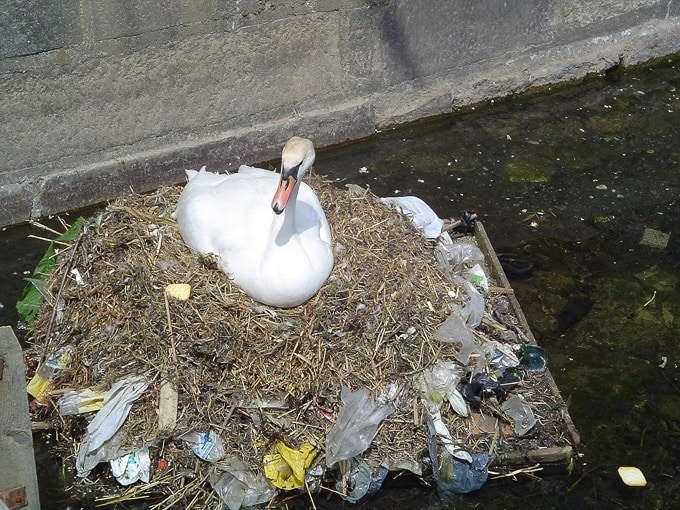
Ready to shake up your routine? In this post, we're delving deep into the world of plastic pollution with 10 impactful plastic facts that'll flip your habits upside down! 🙃 Brace yourself for eye-opening revelations that'll inspire change. 🌍💚
In This Post:
Wherever you are right now, please take a quick look around.
Once to the left.
And then to the right.
How many plastic products can you spot?
The question is not whether you can find any, but how many. In this day and age, we all use plastic.
A lot of it.
Around the clock and all over the world.
No wonder, since plastic is so handy. In addition, it is light, transparent, resistant, durable and not to forget: Cheap.
We are now surrounded by so much plastic that modern life would collapse if the use of a magic wand made all the plastic disappear at once.
Surprising Plastic Items YOU USE DAILY
That cozy fleece that's our go-to for chilly mornings?
The soles of our trusty sneakers that have carried you through countless miles?
Even that sleek, modern TV that's the centerpiece of our living rooms?
Surprise! They're all hiding a not-so-secret ingredient: plastic.
It's not just the obvious stuff, like water bottles and grocery bags. Plastic has slithered its way into the very fabric of our lives, lurking in places we never even thought to look.
Those tiny bristles on our toothbrush? Plastic.
The soft, absorbent lining of tampons? Plastic.
The microchips that power our smartphones and gadgets? Yep, you guessed it – plastic.
We use plastic without thinking, without realizing how deeply embedded it is in our routines and habits. It's a material chameleon, blending seamlessly into our lives, often unnoticed until you stop to take a closer look.
Ok, plastic is ubiquitous, so what? At least it's being recycled, right?
RIGHT?
How Much Plastic Is Being RECYCLED?
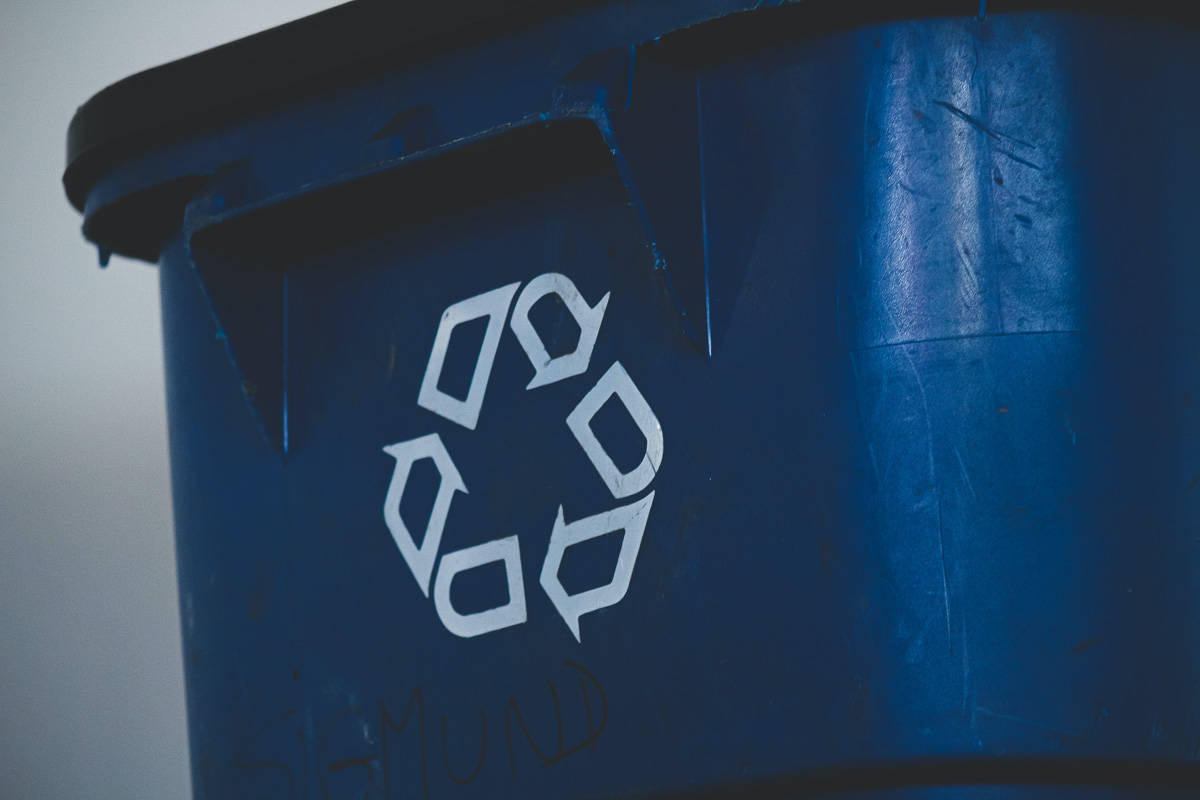
A campaign by National Geographic magazine is titled 'Planet or Plastic.'
'Plastic planet?'
That hits the nail on the head, considering around 300 million tons of plastic are produced worldwide every year.
Only 20% of it is recycled. (See plastic facts #3 and #4)
The rest ends up in the environment. And it’s bound to stay there, as plastic takes decades or even centuries to decompose.
For example, it is estimated that a plastic bottle takes about 450 (!) years to decompose.
Decomposing is not the same as degrading. Decomposing means that the product still exists, but it breaks down into smaller pieces.
This, in turn, means every plastic item ever manufactured still exists - even if it's just a tiny, invisible piece (called microplastic). This is the first on the list of 10 plastic facts that speak against the use of plastics.
The other 9 plastic facts are no less worrying.
So: Plastic pollution is real!
If you've heard enough and want to take action, you can jump straight to the next article explaining how to ditch plastics now: 40+ Tricks on How to Reduce Your Plastic Use.

Ditch Plastics Now: 40+ Tricks on How to Reduce Plastic Use
If you have an inquisitive mind and can handle hard-hitting facts, here are the 10 shocking reasons why we should all cut down on our plastic use.
Plastic Pollution: 10 HARD-HITTING Plastic Facts
FACT #1: Plastic is not biodegradable - it turns into microplastic!
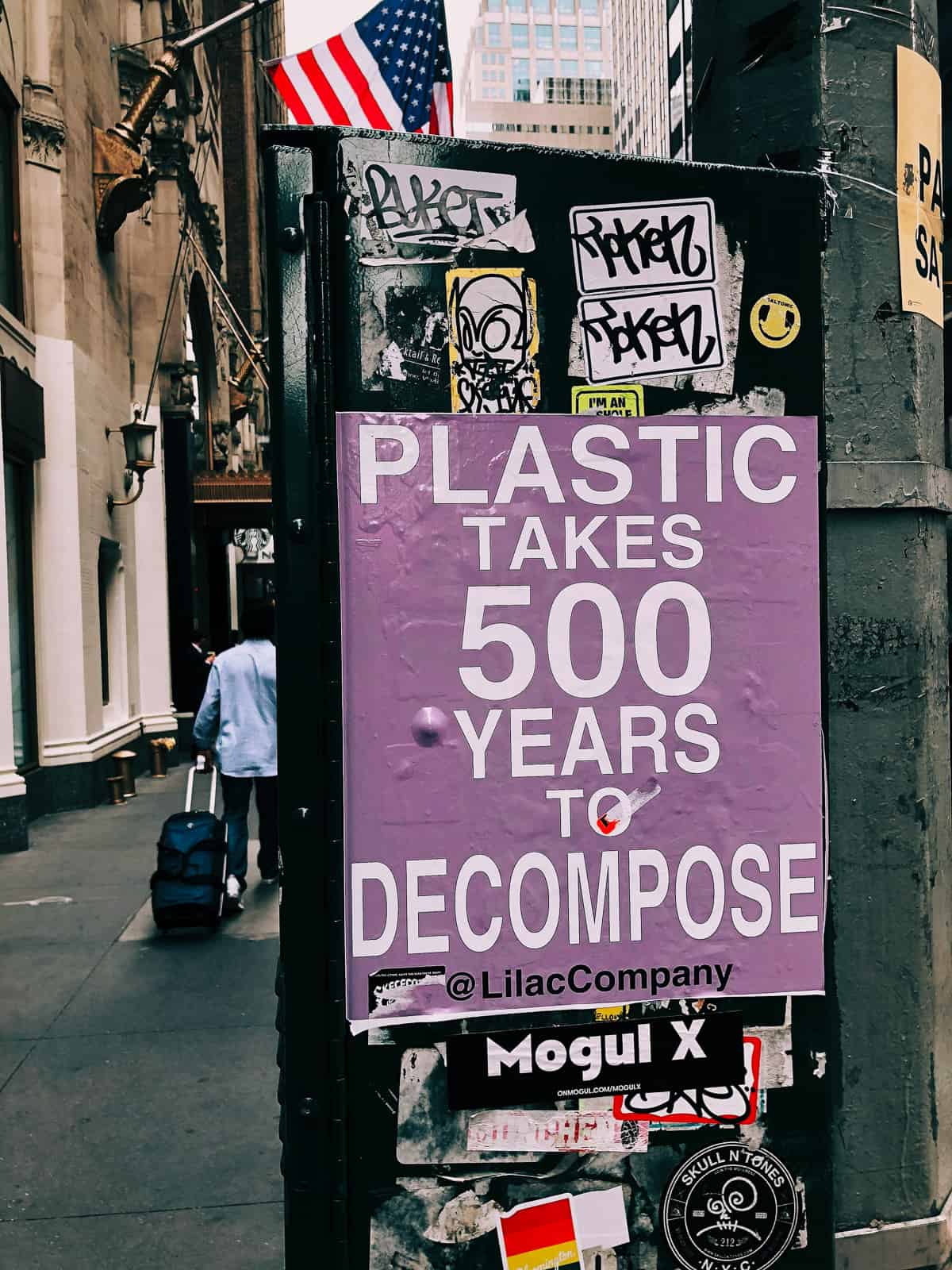
Plastic is an artificially (chemically) manufactured product that cannot be degraded by microorganisms as is the case with banana peels or apple cores, for example.
That is, plastic does not go away. Never.
But the weather and other environmental influences will eventually break it down into smaller and smaller pieces.
So small, in fact, that at some point they can no longer be perceived by the human eye. But these plastic pieces still exist. This is called (secondary) microplastic. (ZME Science)
FACT #2: Plastic production is harmful to the environment.
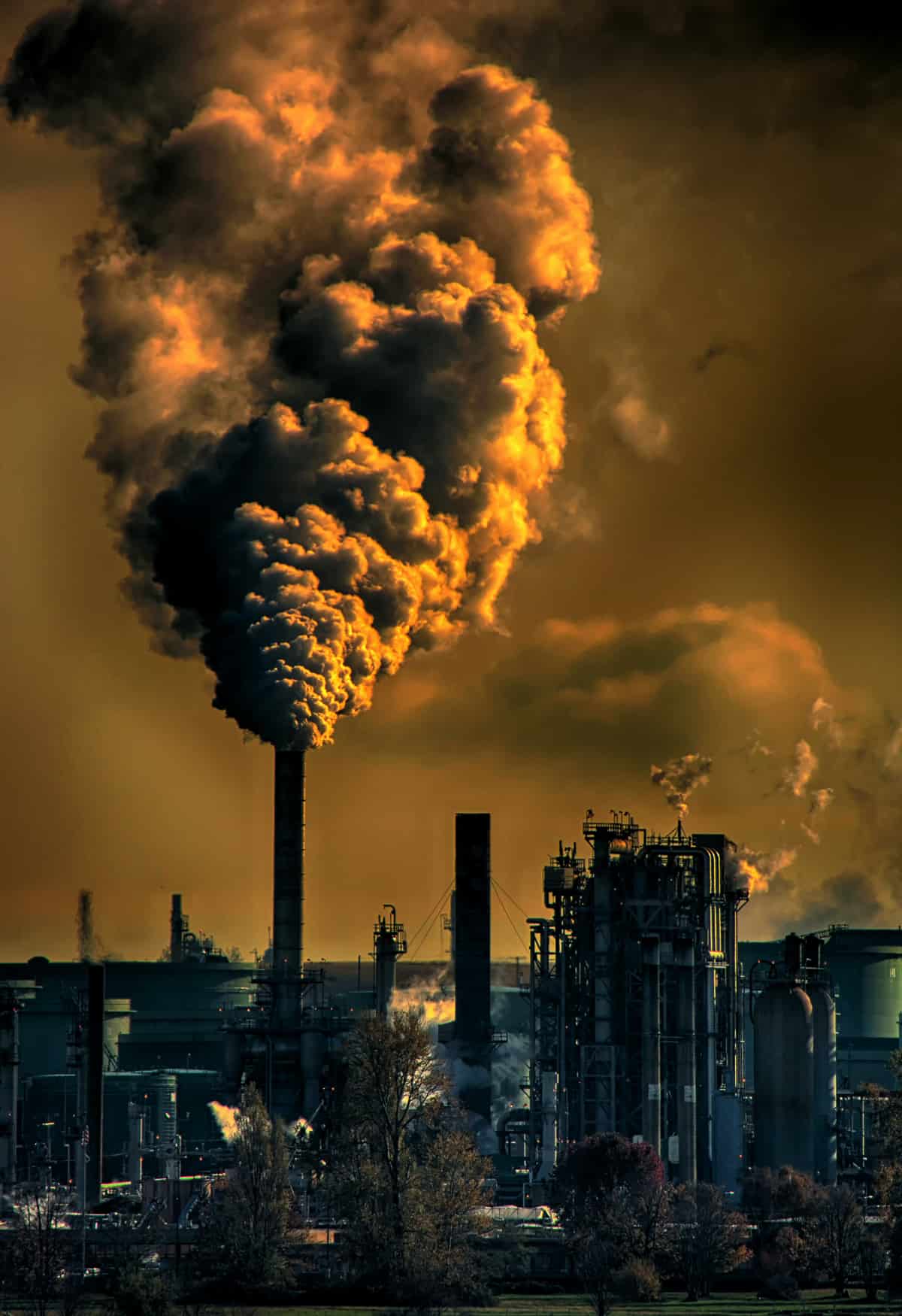
Plastic production requires petroleum, a fossil fuel with limited availability. Toxic gases are emitted during production. (Science Advances, EcoWatch)
The production facilities are major polluters and often make negative headlines due to accidents, fire, explosions, and the leaking of toxic chemicals. (Forbes)
FACT #3: Only a fraction is being recycled.
About 8.3 billion tons of plastic have been produced since the 1950s. Only about 9% has been recycled. (The Guardian)
Do more than 8 billion tons also seem outrageous to you?
We humans have a hard time wrapping our minds around such numbers. In the article Marine Plastics, the infographic "A Clearer Picture of Plastics" (scroll down to the middle of the article) clearly and vividly demonstrates what this number means:
8 billion tons correspond to about 1 billion elephants, 80 million blue whales, or 822,000 Eiffel Towers.
FACT #4: Recycling plastic is harmful to the climate.
Plastic waste is either landfilled, incinerated, or recycled. Of these three disposal options, recycling is the best, yet it is by no means environmentally friendly. (Our World in Data)
Recycling also consumes a lot of energy and generates CO2 emissions. In addition, plastic can only be recycled once, at most twice (unlike glass, which is infinitely recyclable). (Popular Mechanics)
Since China has banned plastic waste imports from other countries, it is estimated that the exporting countries (e.g. Germany and the US) will have to recycle or incinerate (or not produce at all) a total of 111 million tons of plastic waste by 2030. (Bloomberg)
FACT #5: Plastic leaks toxic substances.
Plastic contains harmful chemicals such as phthalates, BPS, Glyphosate, BPA, and also undisclosed material. (CHEM Trust)
These chemicals are released by heating or damage and are harmful to health. (Journalist's Resource)
Some of these chemicals have been classified as carcinogenic. (Journal of Carcinogenesis, The truth about cancer, Very Well Health)
FACT #6: Millions of tons of plastic are in the ocean.
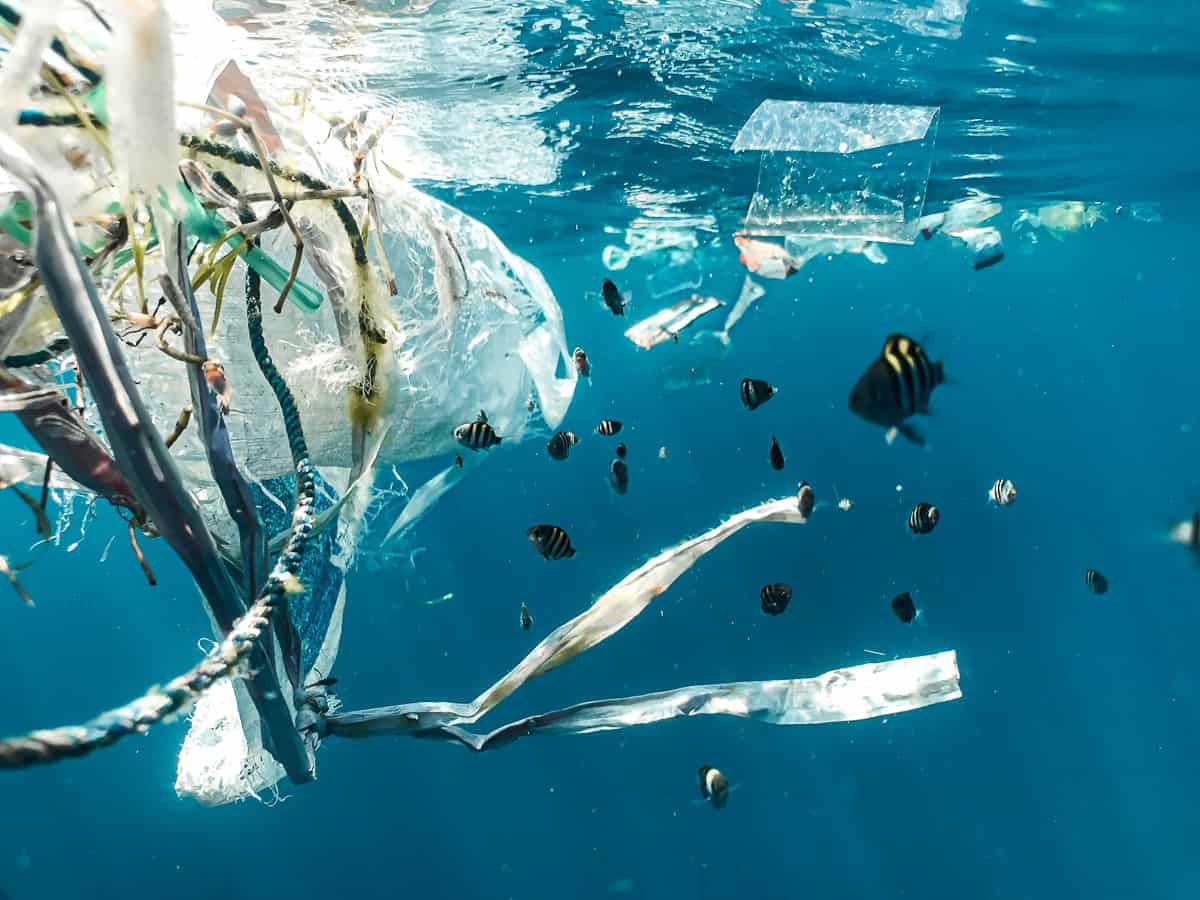
There are 150 million tons of plastic in our oceans today. (European Parliament News)
Every minute the equivalent of a truckload of plastic enters the ocean. (Greenpeace)
Unless we dramatically reduce our plastic consumption, the oceans will contain more plastic than fish by 2050. (The Guardian)
FACT #7: Millions of fish and birds are killed.
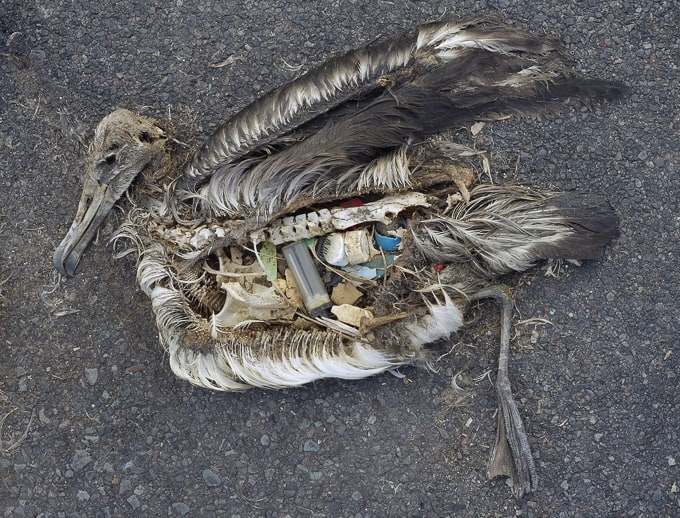
Millions of marine animals are killed by plastic each year (by strangulation, swallowing, or due to chemicals contained in the plastic). (UNESCO, One Green Planet, Smithsonian Ocean)
FACT #8: Microplastic poisons our soils.
Microplastics can be found not only in the ocean but also onshore, polluting our soils and inland waters. (UN Environment)
FACT #9: Microplastic is found in the human body.
People are exposed to plastic, especially microplastic, and the potentially harmful chemicals they contain, from water, food, personal care products, and clothing. (Independent)
Microplastic has already been detected in the human stool. (The Guardian)
FACT #10: Plastic waste costs a lot of money.
The overall economic damage caused by plastic waste worldwide is estimated at around 13 billion dollars. The costs are usually not paid by the polluting parties themselves (plastic manufacturers and consumers), but by the coastal communities, the tourism industry, and the shipping industry. (The Guardian)
INFOGRAPHIC: 9 Reasons to Refuse Single-Use Plastics
If you're more of a visual person, check out the catchy infographic by the organization Less Plastic, summarizing the most important reasons for avoiding (disposable) plastic.
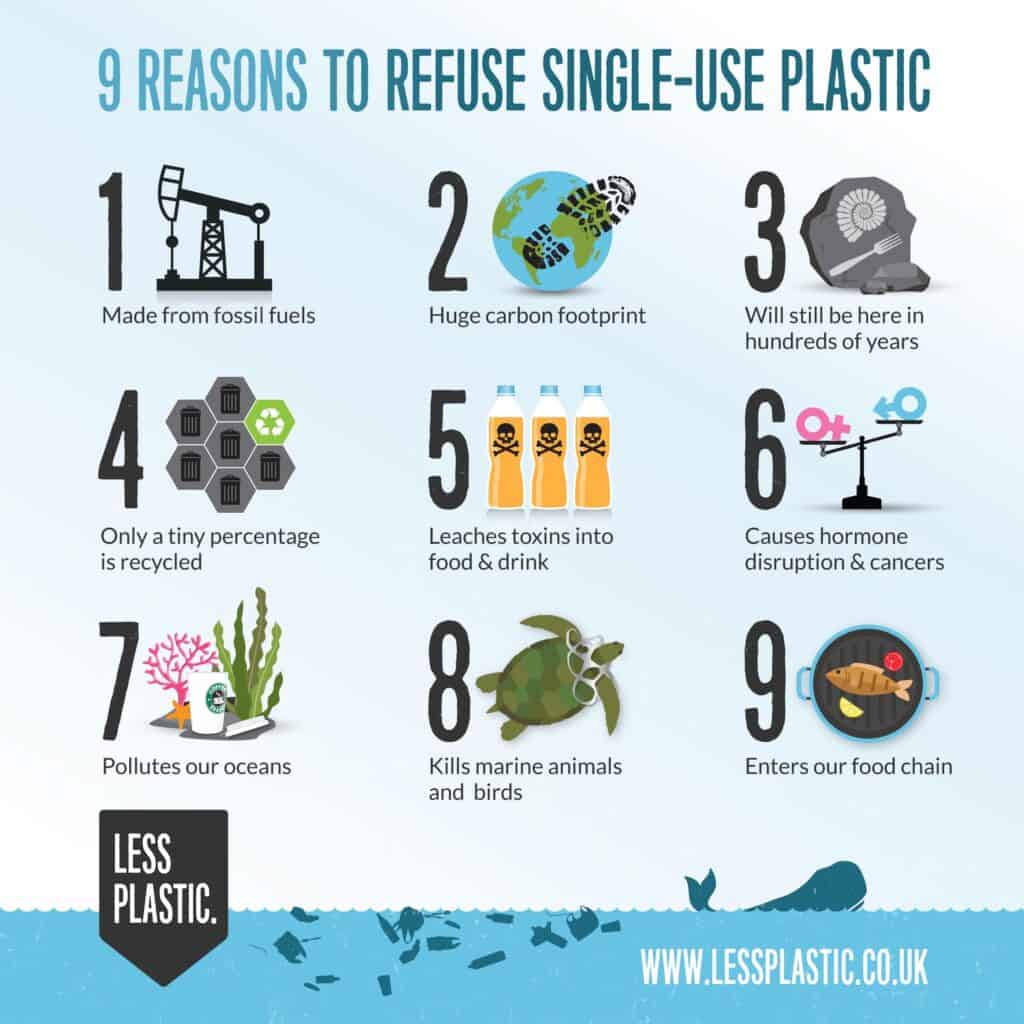
Act on These Plastic Facts: What YOU Can DO
What do you think about these plastic facts? I find them shocking.
BUT: What's even more shocking ...
The largest market for plastic today is packaging. It's crazy that an imperishable material is being manufactured and used on a large scale as a disposable commodity.
Over 40% of the plastic produced today is used only once and then discarded (National Geographic).
Plastic water bottles, produce packaging, candy wrappers, straws, single-use coffee cups, plastic bags - they all end up in the bin, or - more likely - on the street, in the park, in the woods, in the river, and finally in the ocean.
Plastic pollution is a serious problem today, especially plastic waste in the ocean – one that is increasing each year.
If you live near a river or the ocean and take a stroll on the beach, you've probably noticed plastic items. It's not only what people walking there discard; it's also plastic waste that landed in the ocean and got washed up on the shore.
Can I or you stop plastic pollution? No. Not individually.
But everyone can contribute to reducing the demand for plastic.
How is that supposed to work?
By starting with our own plastic consumption.
Take a closer look at the products you use. Then swap them for plastic alternatives, step by step: Banish one piece of plastic at a time from your everyday life and replace it with more sustainable products and materials.
It may be challenging at the beginning, but it gets easier along the way. AND: It is worth it.
I've asked a zero-waste expert about her best tricks to reducing single-use plastic, and she let me in on 40+ handy tips on how to reduce the use of plastic (at home, on the go, and in the office). This is the perfect starting point for those who are just embarking on the ditch-plastics journey. And there are even tips for the plastic-free pros.
Thoughts? Ideas? I'm curious to know... write them in the comments.
Wishing you planty of plastic-free delights,
Ramona
Psst, you'll enjoy 2 Genius Ways to Save Water and the bee-friendliest plant.
______________


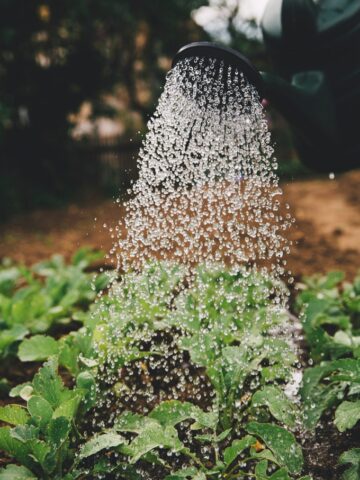
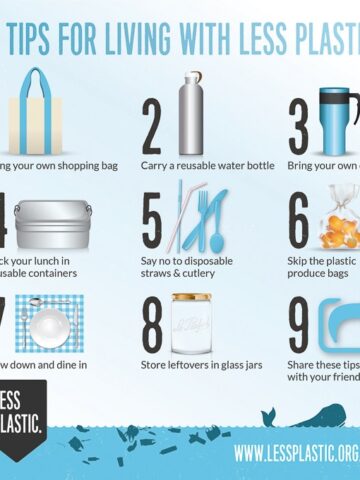
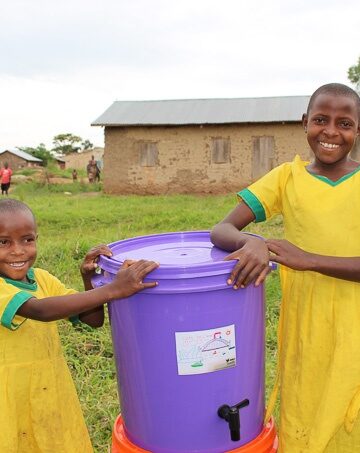
Write a Comment